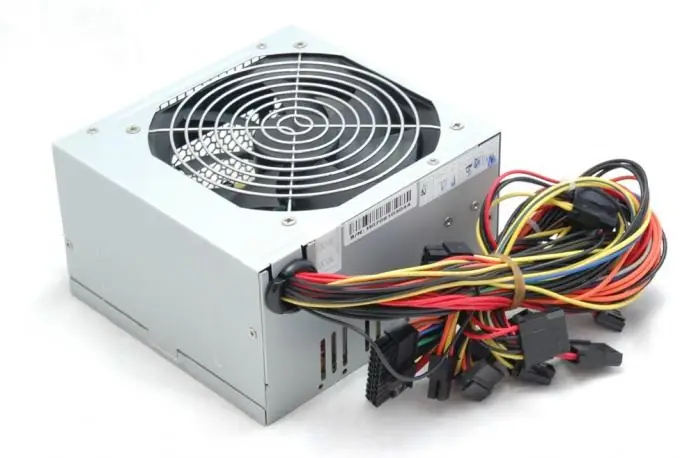The first thing you should do if your computer malfunctions is to find out which hardware has broken down. The hardest part is checking the power supply, as it can break completely, which can mean replacing it, or some of its constituent parts can break.

Necessary
- - screwdriver;
- - instructions for connecting the motherboard wires;
- - source of power;
- - voltmeter.
Instructions
Step 1
Make sure the problem is a broken power supply. When turning on, pay attention to whether the cooler is spinning behind the grill of the block on the back of the computer case. If not, then this most likely means that it is defective. It may also indicate a problem with the motherboard - it simply may not send a power-on signal. It would be convenient to have a spare working power supply here to check for sure.
Step 2
If you have a spare, working power supply, disconnect the computer from the electricity supply. Unscrew the screws on the side walls of the enclosure. Remember the order of connecting loops to devices. Pay special attention to the wiring diagram for the front panel of the motherboard - here it is best to draw a detailed sketch or find this diagram in the instructions for the motherboard.
Step 3
Disconnect the power supply wires by gently holding the cables by the bases. Unscrew all the fasteners that secure the power supply to the case of the system unit. Connect the wires of the spare power supply in the same order as the wires of the original one were connected. Connect your computer to a power source. If everything worked, then the problem was found.
Step 4
If you do not have a spare power supply, then disconnect the cables from the devices, disconnect the unit from the case and plug it into a power outlet. Close contact 14, which is designated PS_ON. If the cooler does not move, then specialist intervention is required. Also, to make sure that the problem is with the power and not the cooler, try connecting to the power wires, for example, a floppy drive or an additional fan to see if there is an output voltage. Measure it with a voltmeter. If there are large deviations from the standard voltage indicators, then it is best to take the power supply to a specialist.






